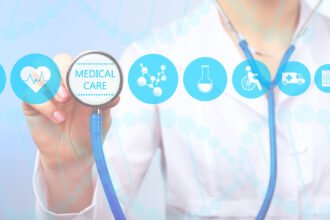I recently stumbled on a short BloombergBusinessWeek news item that said, in part:
“Facebook Inc. (FB), owner of the world’s largest social-networking website, last month acquired Face.com, the Israeli maker of technology that helps users tag photos and find images online by distinguishing facial features.
I recently stumbled on a short BloombergBusinessWeek news item that said, in part:
“Facebook Inc. (FB), owner of the world’s largest social-networking website, last month acquired Face.com, the Israeli maker of technology that helps users tag photos and find images online by distinguishing facial features.
Israel, whose population of 7.8 million is similar in size to Switzerland’s, has about 60 companies traded on the Nasdaq Stock Market, the most of any country outside the U.S. after China. The nation is also home to more startup companies per capita than the U.S. ”
Apart from the business aspect of article, the fascinating thing to me was the automation of face recognition.
How important is face recognition to our survival? Apparently very important; in fact, so important that certain areas in the brain are dedicated to this task. You can lose your memory to buildings, places, other items -but your facial recognition would stay intact.
Why was it so important to dedicate a brain area to this task? As always, think survival. It was extremely important that a person would recognize the individuals around him. One of them may be his foe. Other animals that depend on social interaction for their survival, such as monkeys and apes and probably dogs, have this capacity as well.
There are people who lost their capacity to recognize faces. It could be due to a stroke, or genetic. The condition is called prosopagnosia (prosop=face, agnosia=no-knowledge, in Greek). Fortunately, in modern society these people not marked for extinction. To wit: Paul Dirac, a physicist and Nobel Prize laureate has it. So does Jane Godall, the famous primatologist who studied family and social interactions among chimpanzees in the Gombe Stream National Park, Tanzania. And Oliver Sacks, the neurologist who described the most bizarre neurological cases (The Man who mistook His Wife for a Hat) discovered that he suffered from hereditary prosopagnosia when he complained about recognizing faces and his family told him that his brothers suffered from the same thing. Its heritability was documented in a paper in the Proceedings of the National Academy of Sciences (Human face recognition ability is specific and highly heritable).
As we can see, they all function quite well in modern society. They do it by associating a person with ancillary traits, like gait, voice, speech, clothes, etc.
How do we remember faces?
Carnegie Mellon University’s Marlene Behrmann, David Plaut and Adrian Nestor have discovered that an entire network of cortical areas work together to identify faces. Published in the Proceedings of the National Academy of Sciences (PNAS), participants were shown images of faces while in a magnetic resonance imaging (MRI) scanner. Their task was to recognize different facial identities with varying facial expressions. Using dynamic multivariate mapping, the research team examined the functional MRI (fMRI) data and found a network of fusiform and anterior temporal regions that respond with distinct patterns to different identities. Furthermore, they found that the information is evenly distributed among the anterior regions and that the right fusiform region plays a central role within the network.
fusiform gyrus, in red . (Source: Wikipedia)
If face recognition was so important to survival, wouldn’t you expect a subconscious brain circuit that would allow for quick reaction to threat? Indeed, scientists from the Netherlands ( B. de Gelder) and Oxford University (J. S. Morris and R.J. Dolan) described in an article in the PNAS(Unconscious fear influences emotional awareness of faces and voices) showed that the amygdala and the pulvinar, both centers in the midbrain mediating “primitive” emotions such as fear, became active even when people with “face blindness” were shown a frightening face. Which proves that face recognition in controlled on two levels: conscious and unconscious. What better proof that recognizing faces is a question of life and death?
I can recognize them a mile away
It is easy to recognize a black person from a white one, or a Chinese from a Caucasian. But how about Burmese from Filipino? Any Filipino or Burmese person would do it with out difficulty, but can an average American? Or, on a more touchy subject, can you tell a gay from a straight person by their face? Gays recognize each other by what they call gaydar, which is a portmanteau (contraction) of two words: gay and radar. Is there something to it? In a recent paper in PLoS ONE Joshua A. Tabak and Vivian Zayas present evidence that indeed gaydar exists.
Participants viewed facial photographs of men and women and then categorized each face as gay or straight. The photographs were seen very briefly, for 50 milliseconds, which was long enough for participants to know they’d seen a face, but probably not long enough to feel they knew much more. In addition, the photos were mostly devoid of cultural cues: hairstyles were digitally removed, and no faces had makeup, piercings, eyeglasses or tattoos.
Even when viewing such bare faces so briefly, participants demonstrated an ability to identify sexual orientation: overall, gaydar judgments were about 60 percent accurate, statistically significant. Bear in mind: this was recognition limited to facial features only; mannerisms, tone of voice, gait -all could complement and enhance recognition of gay people.
Mirror mirror on the wall, who is the gayest of them all? (Source: Science Daily)
But the researchers didn’t stop there. In another experiment, they found above-chance gaydar accuracy even when the faces were presented upside down. Accuracy increased, however, when the faces were presented right side up. as the authors explain in a New York Times article it’s widely accepted in cognitive science that when viewing faces right side up, we process them in two different ways: we engage in featural face processing (registering individual facial features like an eye or lip) as well as configural face processing (registering spatial relationships among facial features, like the distance between the eyes or the facial width-to-height ratio). When we view faces upside down, however, we engage primarily in featural face processing; configural face processing is strongly disrupted. Their discovery — that accuracy was substantially greater for right side up faces than for upside-down faces — indicates that configural face processing contributes to gaydar accuracy. Specific facial features will not tell the whole story. Differences in spatial relationships among facial features matter, too.
Now we can close the loop: remember the opening story about the Israeli company , Face.com, that Facebook acquired? their computer program is based on featural and configural features of face recognition. Why would Facebook want to distinguish gays from straights? Intriguing, but that’s a subject for another post.








